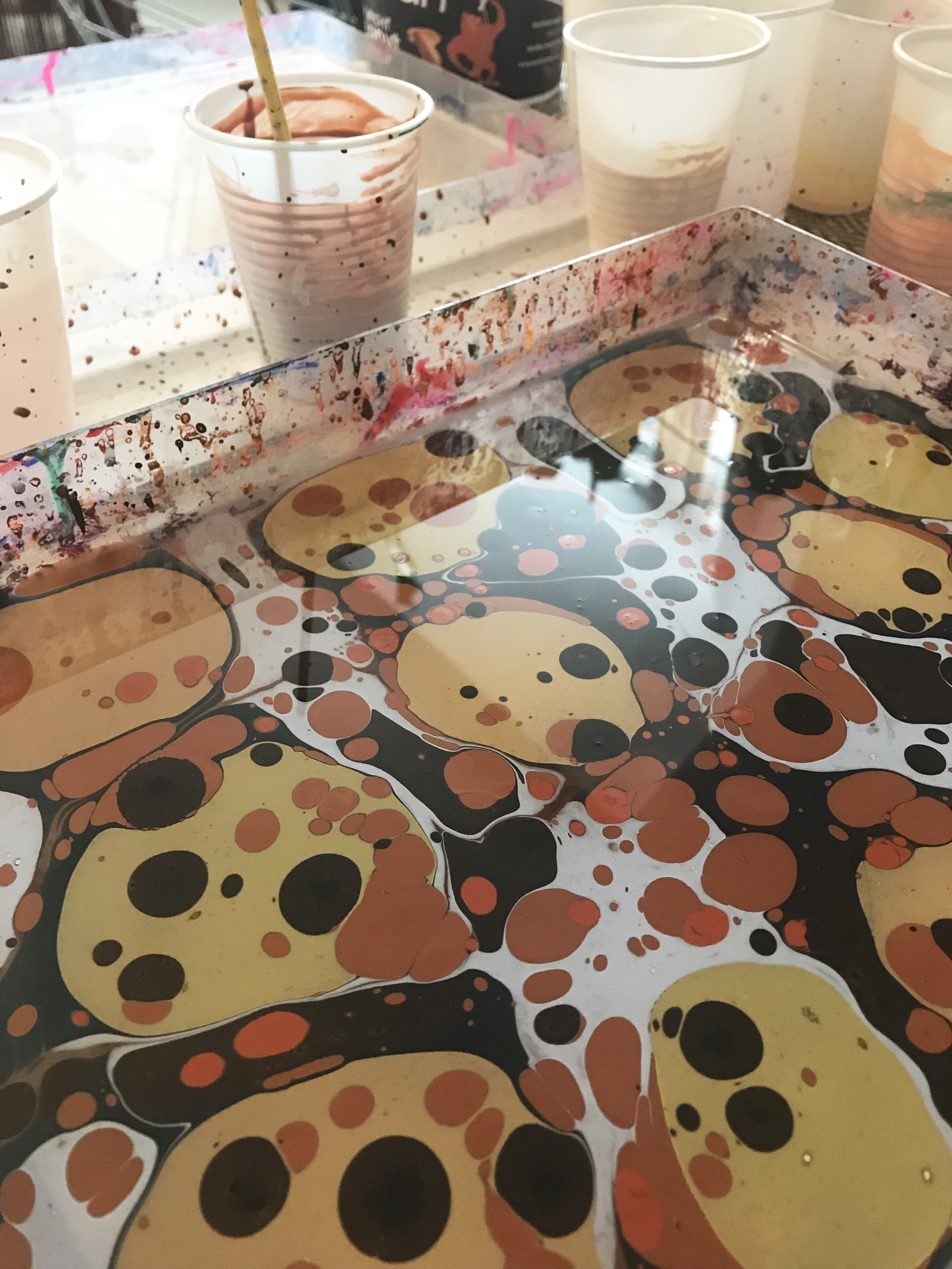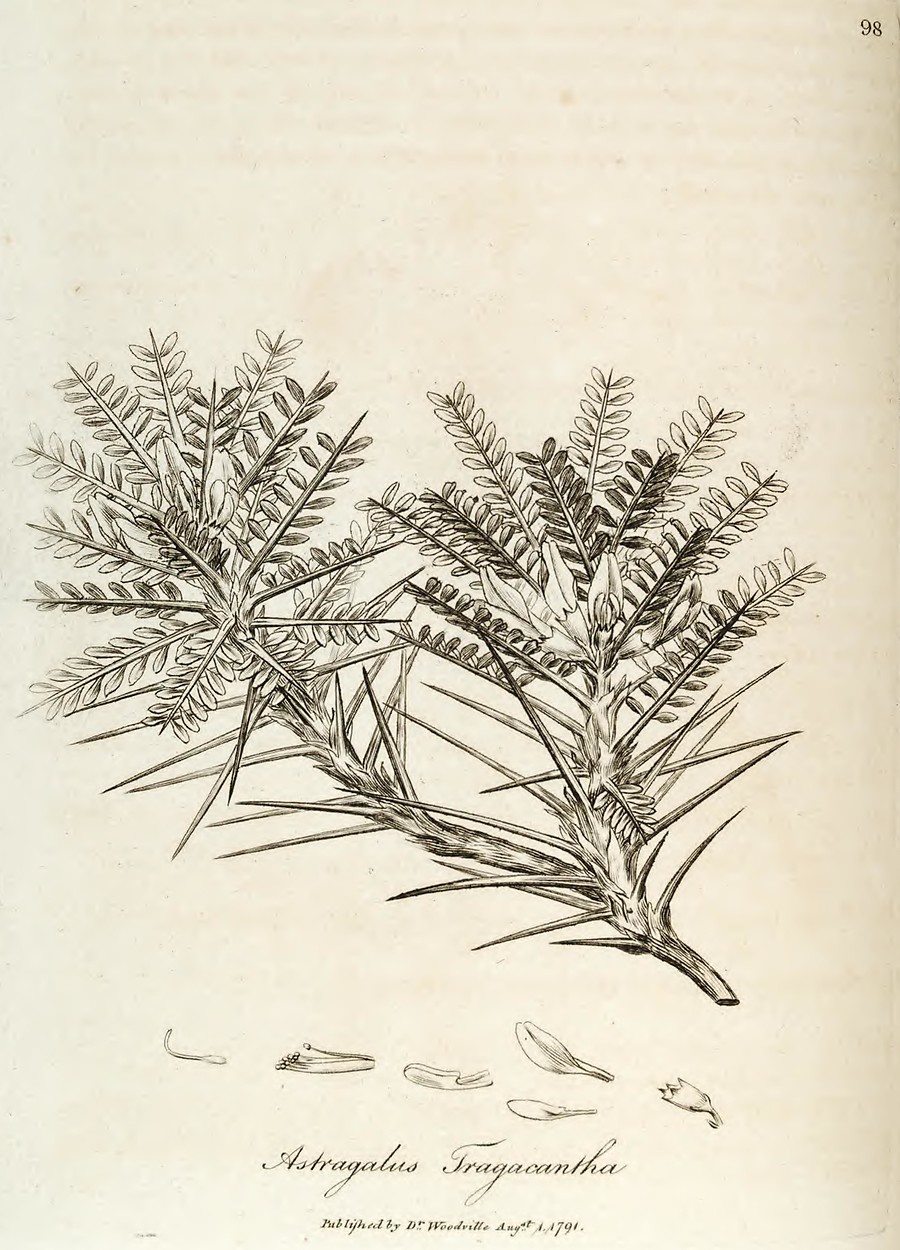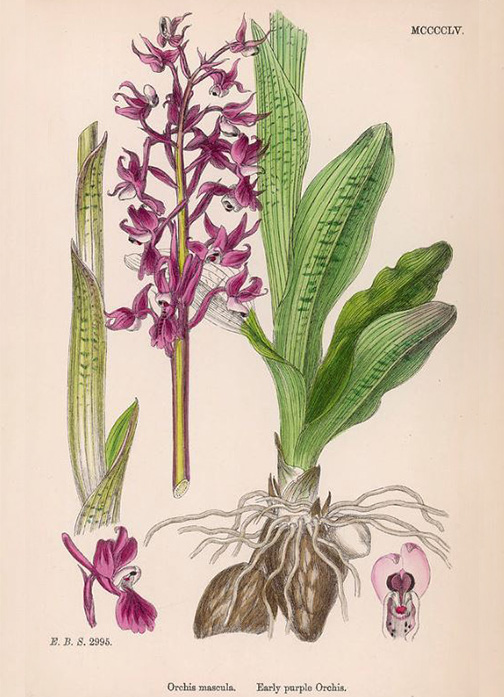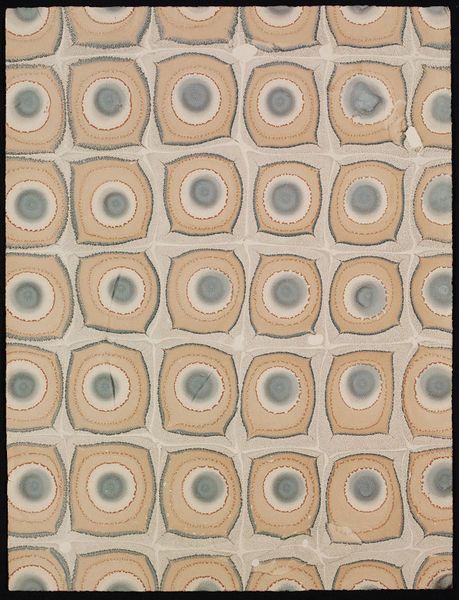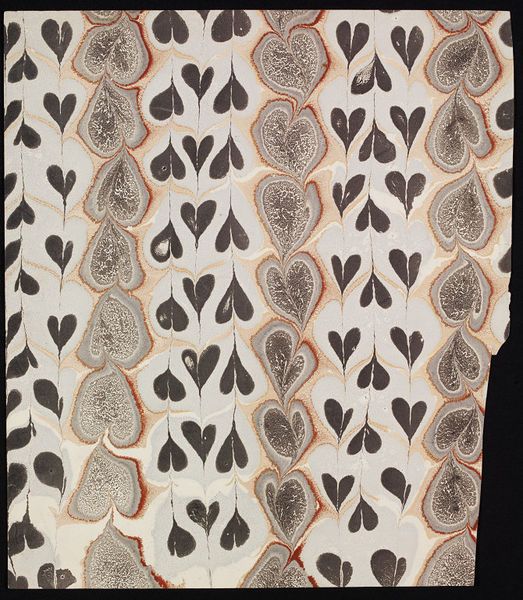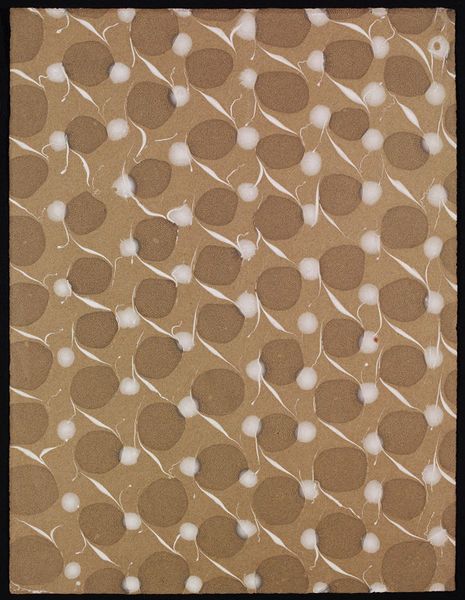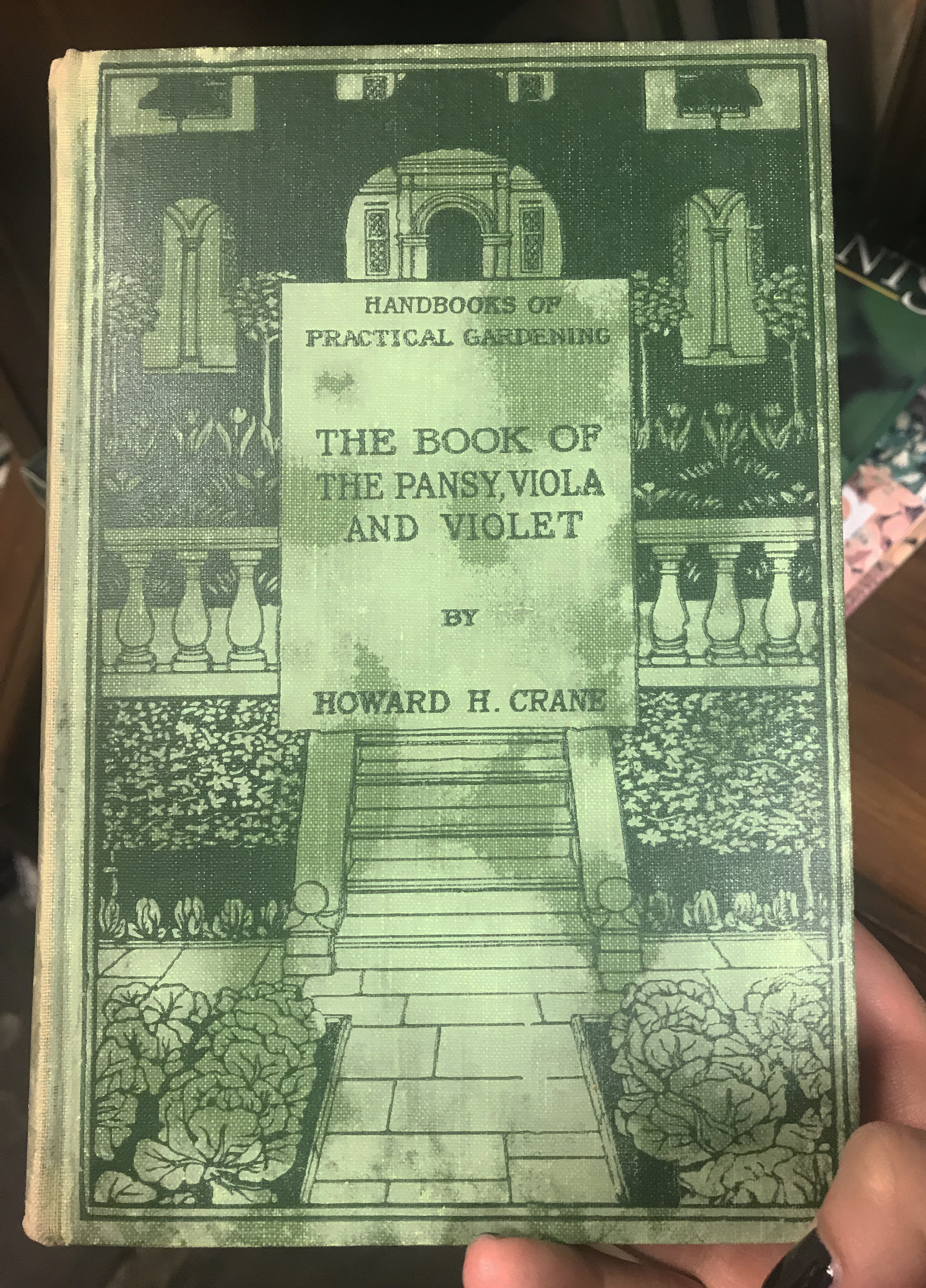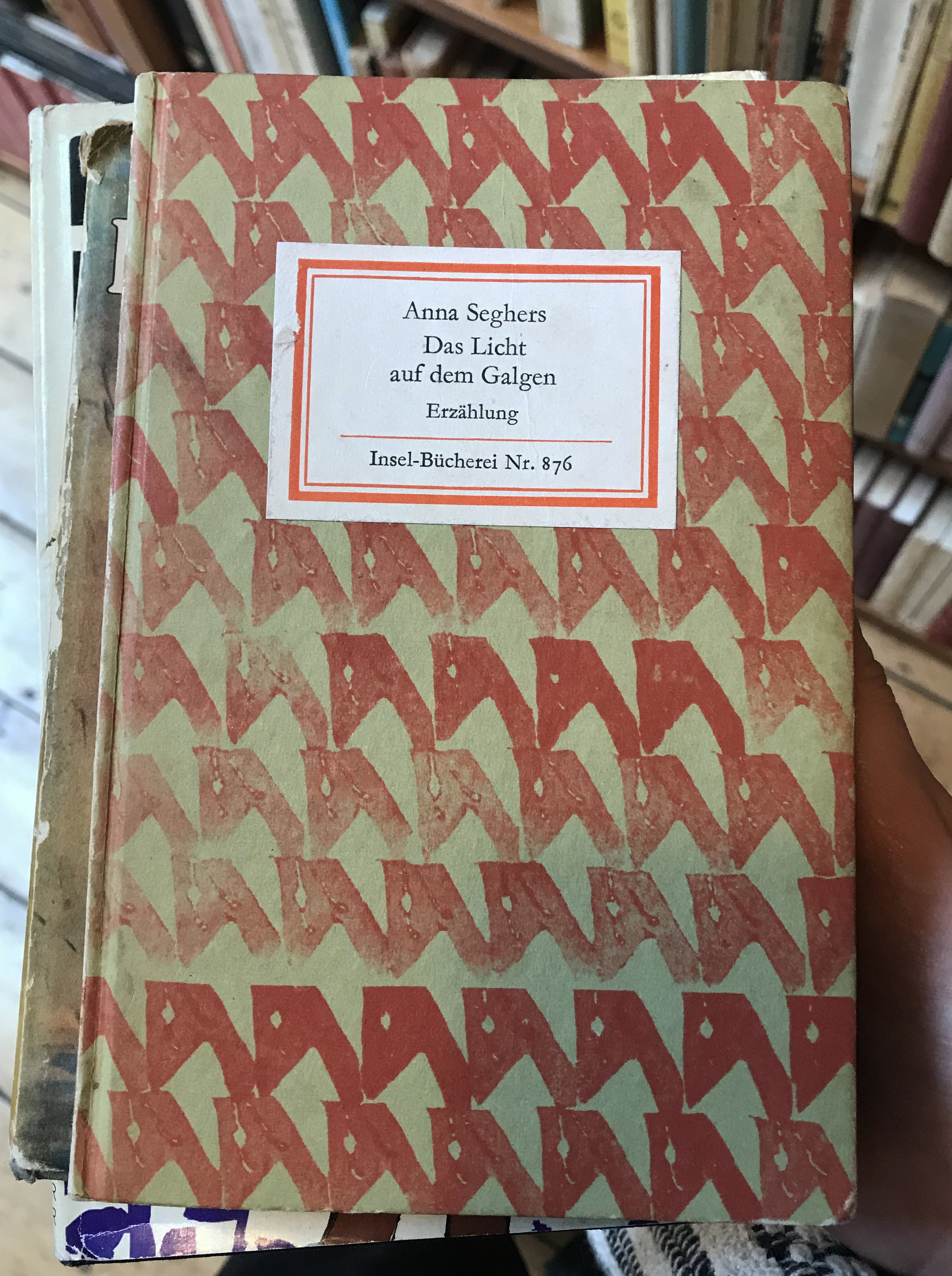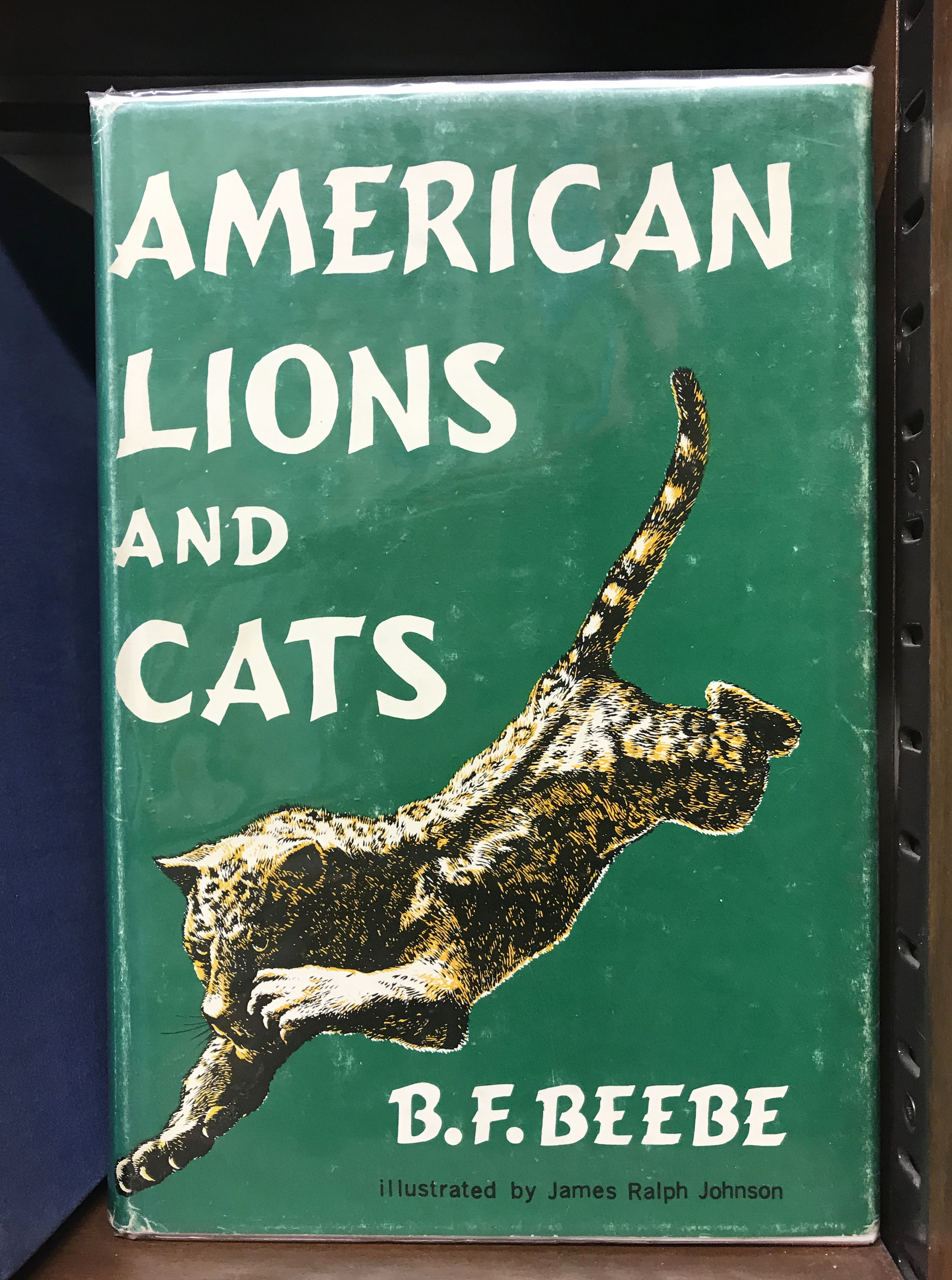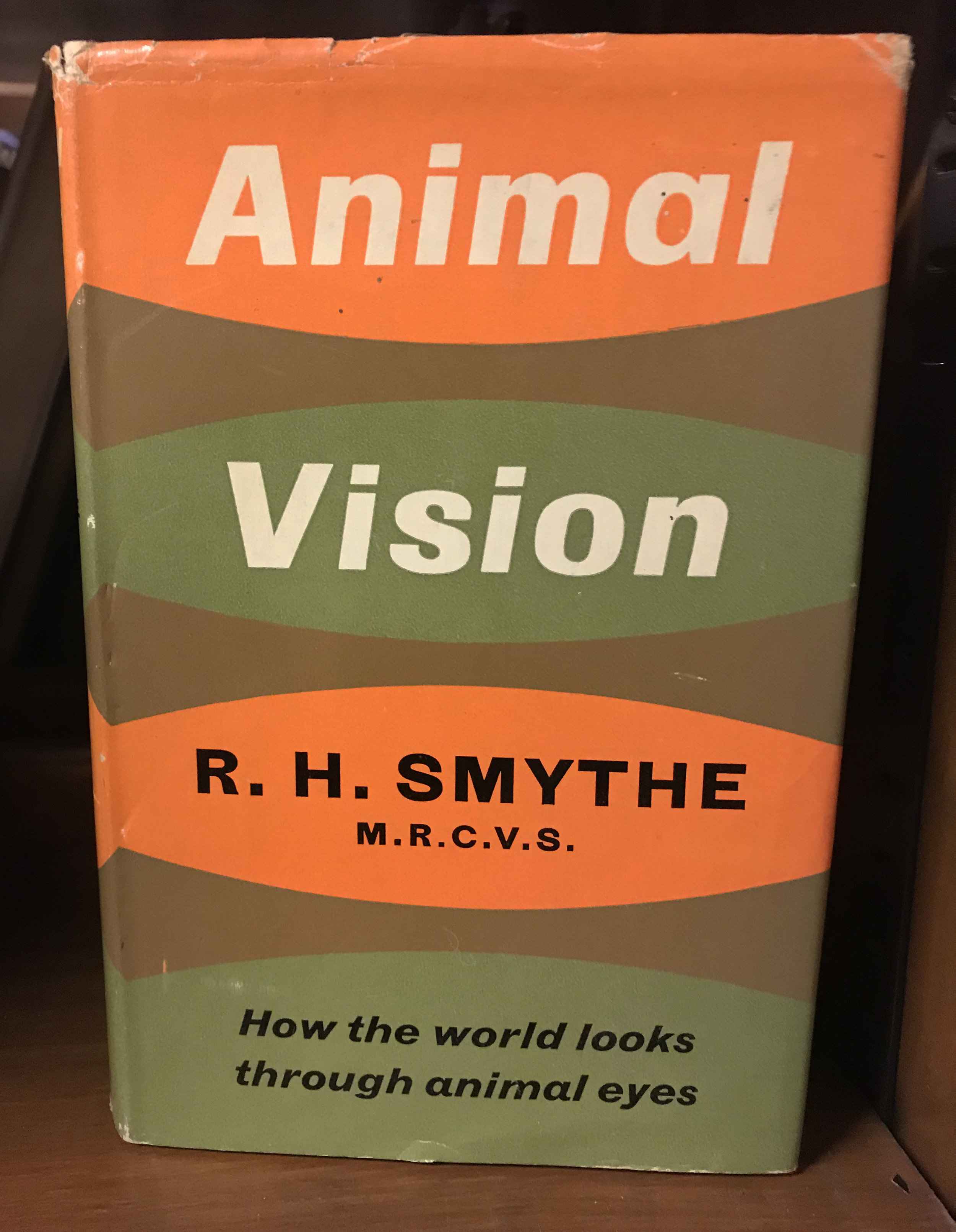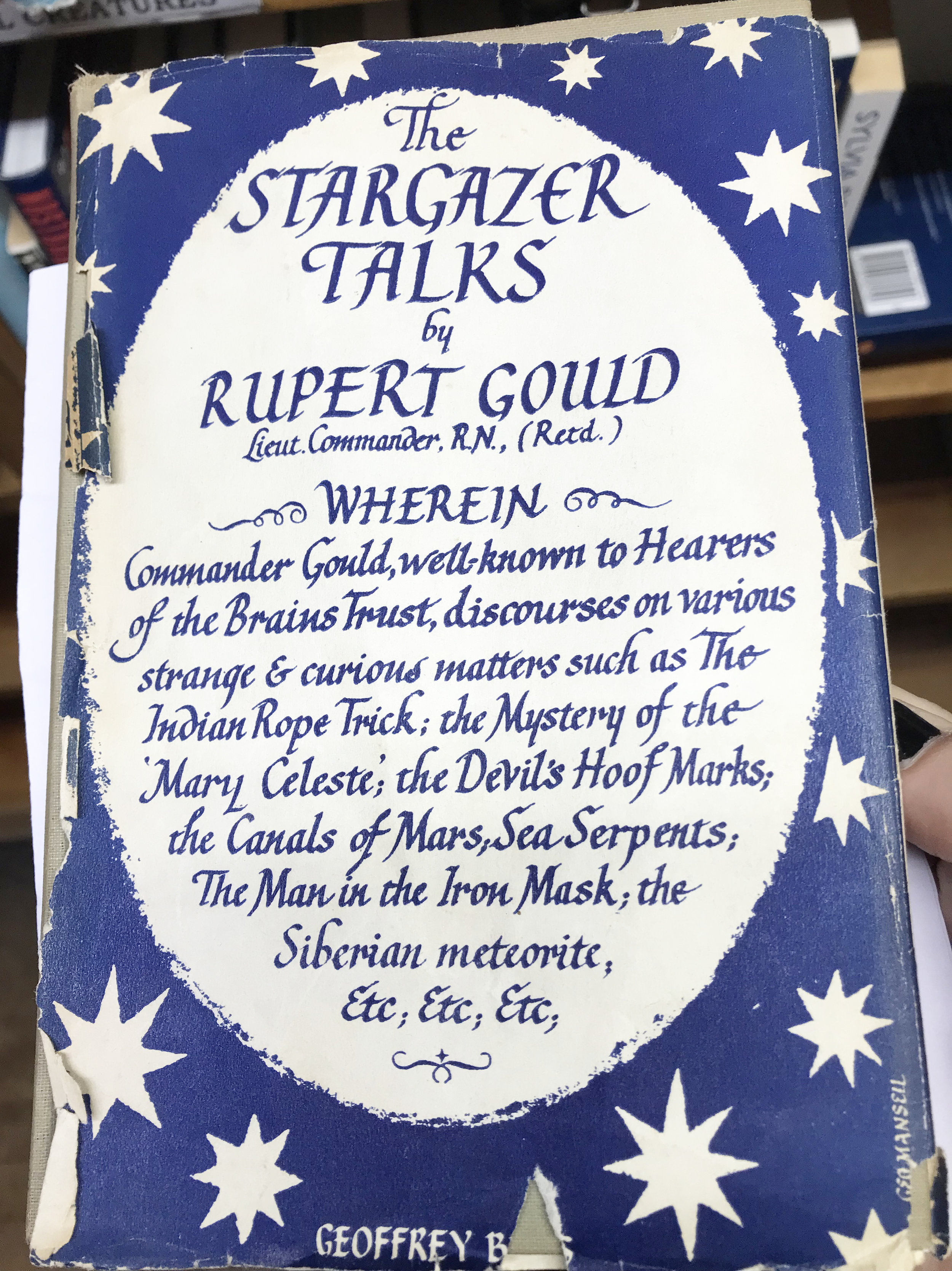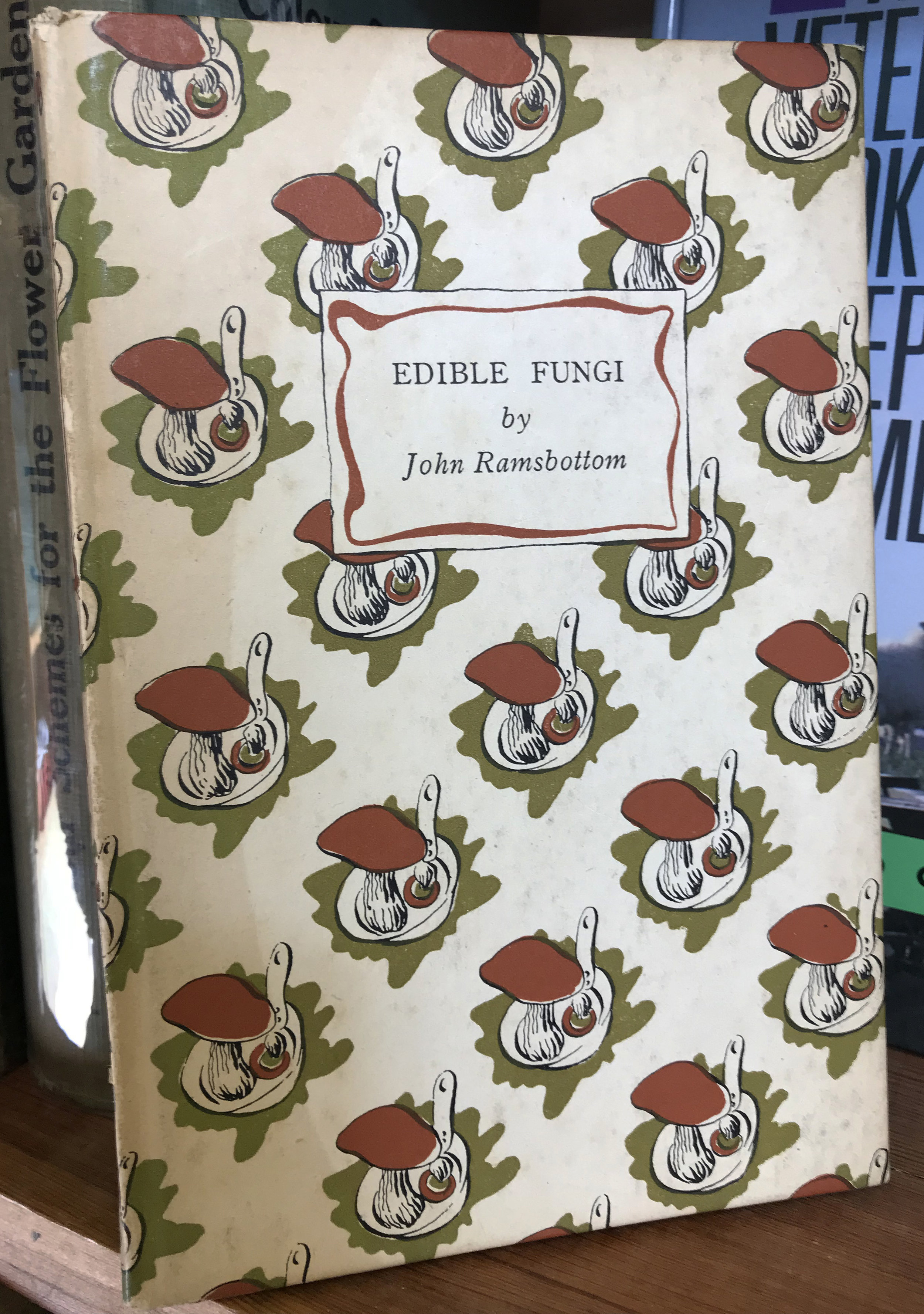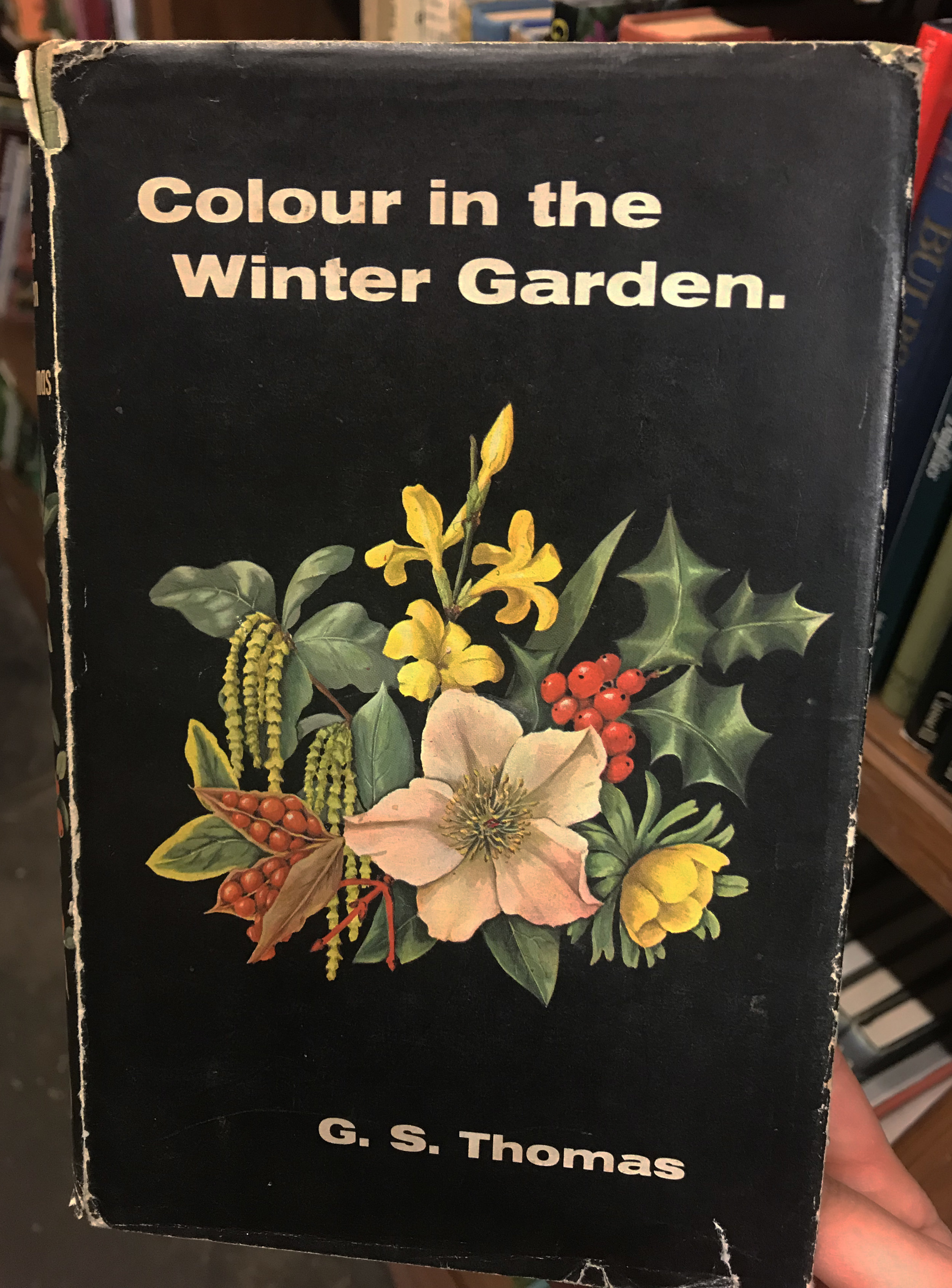I taught myself how to marble through trial and error. I bought one of those marbling kits from Amazon which did come with instructions, but only for the tiny amounts of unlabelled inks within the pack. When this all ran out I sourced my own versions of the mordant, size and inks, but it just wasn’t the same. So I’ve been experimenting and discovering my own methods ever since.
Over the years I have scoured the internet for recipes, tips and tricks to learn how to marble, but never why. Why did people start doing this? And when?
Along with pizza and pavlova, marbling’s origin is difficult to trace. A Chinese scholar wrote of the “four treasure of the study"', namely the ink stick, ink stone (for grinding ink), ink brush and paper, in 986 CE. The scholar’s text describes decorative papers as Liu Sha Jian meaning “drifting-sand” or “flowing-sand notepaper".
The composition of this flowing-sand notepaper is brilliant, and must have smelt pretty amazing. The ‘size’, which is the thick liquid used to drop colours onto, was made of fermented flour paste mixed with colours. An alternative recipe used honey locust pods, and ginger was used to disperse colours in the marble bath. A hairbrush was then beaten over the top of the bath, and as the dandruff fell onto the swirling liquids, colours would form together.
Honey Locust Pod, from The Forest Trees of North America, published 1891
Marbling reached Iran and central Asia by the 15th Century and was known under many names. ‘Abrī’ in Persian, ‘ebre’ in Chagatai and now the well-known ‘ebru’ in Turkish. In Iran it is often called ‘abr-o-bâd’ which translates as ‘cloud and wind’. By the 16th Century, artists in Turkey, Persia and India were developing their recipes, which would also have been plant-based and sweet-smelling. Astralagus tragacantha, fenugreek and Orchis mascula were all used to thicken a water bath.
This reminds me of a visit I made to the Towner Gallery’s exhibition ‘Ravilious & Co: The Pattern of Friendship’ in 2017. Tirzah Garwood, who happened to be Eric Ravilious’ wife, created her own interesting and unconventional methods of paper marbling. using diluted oil paints. I read her ingredients list somewhere, I must find that. I love her style so much!
I also read somewhere that because marbling is a form of monoprinting, where you can only create a unique, one-of-a-kind print each time, it was used as a means of preventing document forgery. Marbled paper was therefore used to write not only important documents, but high-value gifts and letters. I love the idea of bringing back marbled paper as a way of authenticating a document. Perhaps I shall write my will on it? Or marble my cheque book?
So I’m now thinking about breaking out of my habits and trying some more radical, or historical, recipes for marbling. I might not go so far as sprinkling dandruff on the bath, but the concept of more ‘natural marbling’ appeals to me. I have used synthetic size now for years, as it’s much cheaper and doesn’t go off. Very handy when you are running workshops. But, I am ashamed to say this, I have never used Irish Moss, or carrageenan, which has been used by marblers in Europe since at least the 19th Century. I’ve also been thinking about ways of dispersing colour on the marble bath in a more natural way. Not ideal for a summer project but I plan on seeing what rain does…to be continued…

